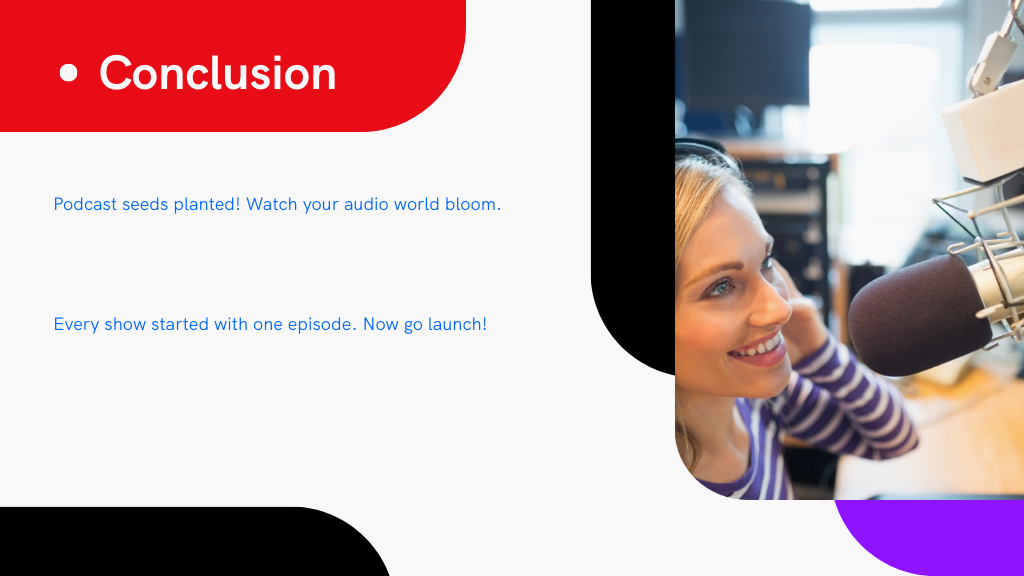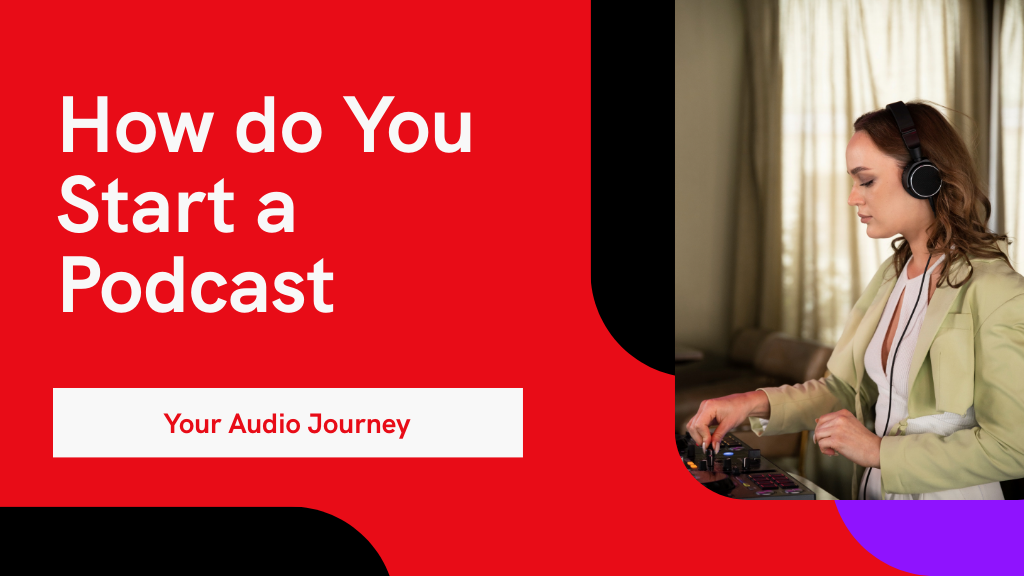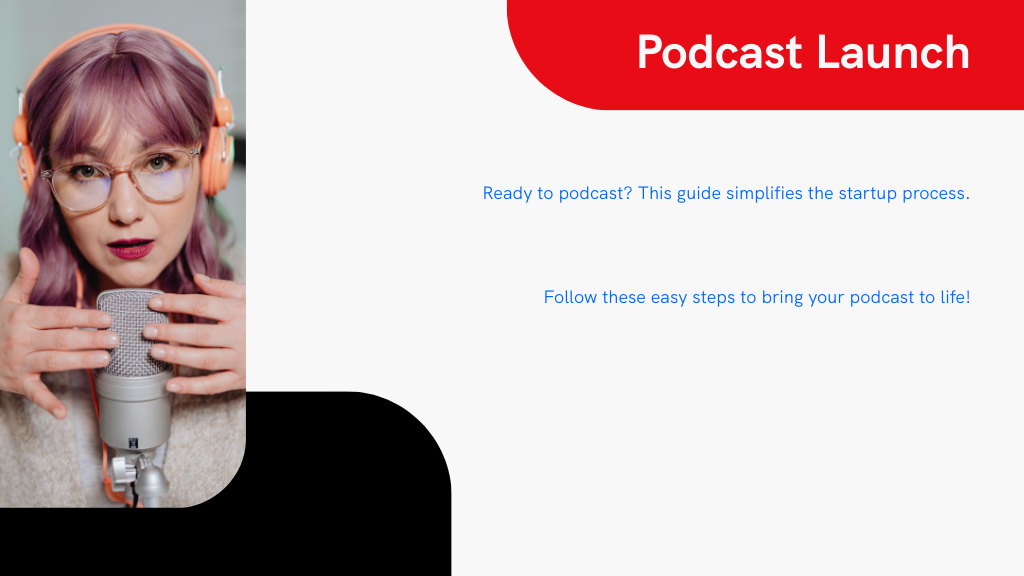
To start your podcast today, first define your concept, target audience, and goals to stay focused. Choose a format and episode length that suits your style, then pick quality recording equipment and software. Prepare episode outlines and record in a quiet space. Edit audio for clarity and flow, design eye-catching artwork, and set up hosting with distribution on major platforms. Finally, promote your show through social media and collaborations. Keep following to uncover deeper insights and tips for podcast success.
Define Your Podcast Concept and Goals
Before you launch your podcast, you need to clearly define your concept and goals to keep your show focused and engaging. Understanding how to make a podcast starts with pinpointing a specific topic, a unique angle, and your target audience. This sharp focus helps attract listeners who are genuinely interested.
Set clear goals—whether it's generating leads, building authority, or sharing your message—to maintain motivation and direction. Conduct market research to spot competition and content gaps your podcast can fill, boosting its chances of success.
Draft ten episode ideas to test your concept’s viability and guarantee you can sustain content over time. Finally, sum up your podcast’s core essence in a single sentence, giving you a constant guide as you create episodes.
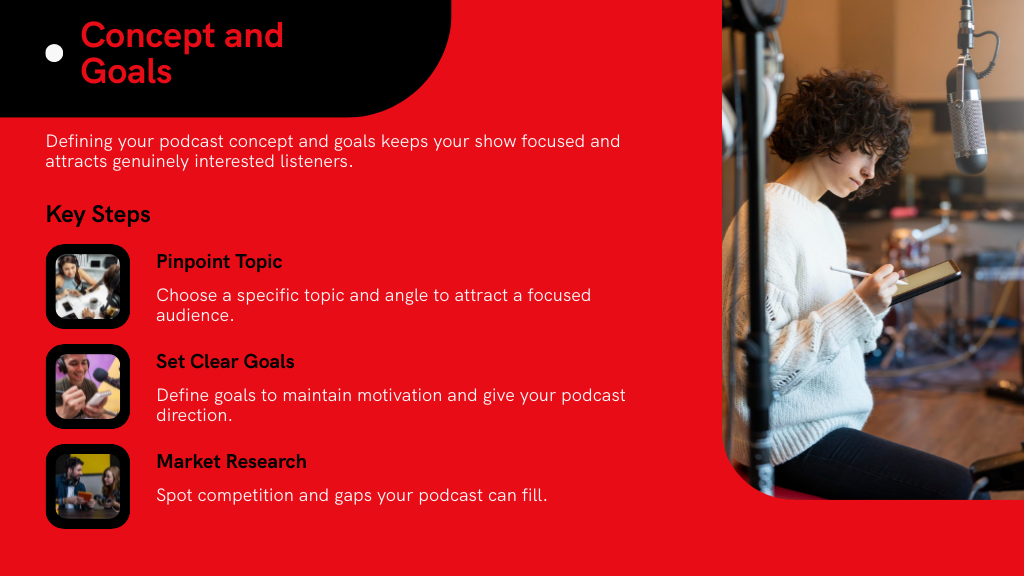
Choosing the right podcast format and episode length can make a big difference in how your audience connects with your show. When you’re figuring out how to begin a podcast, consider formats like interviews, co-hosted chats, scripted non-fiction, or educational content—each offers unique ways to engage listeners.
Your episode length should balance value and brevity; some audiences prefer quick under-10-minute listens, while others enjoy hour-long explorations. Aim to keep your episodes focused and consistent to retain interest. You might also mix formats within episodes to keep things fresh and cater to evolving tastes.
Don’t forget to plan a clear structure with a hook, main content, and a conclusion. This approach helps build a loyal audience who’ll come back week after week.
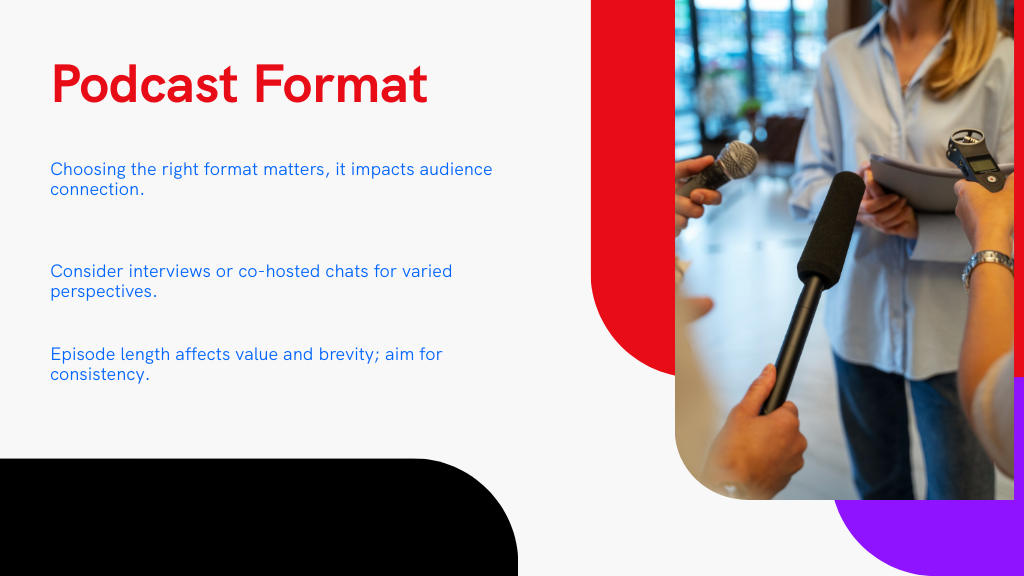
Choose and Set Up Your Podcast Recording Equipment
Good audio quality starts with the right recording equipment, and getting this set up properly makes a huge difference in your podcast’s professionalism. When learning how to start a podcast, focus on gear that captures clear sound and minimizes distractions.
- Invest in a versatile microphone like the Samson Q2U, which supports both USB and XLR connections for flexibility.
- Use closed-back headphones to monitor your audio and catch any issues during recording.
- Add accessories such as pop filters, shock mounts, and boom arms to enhance sound quality and mic placement.
Also, choose a quiet space and test mic distance—ideally 2-4 inches from your mouth—to guarantee crisp, clear recordings. This setup lays a strong foundation for your podcast’s success.
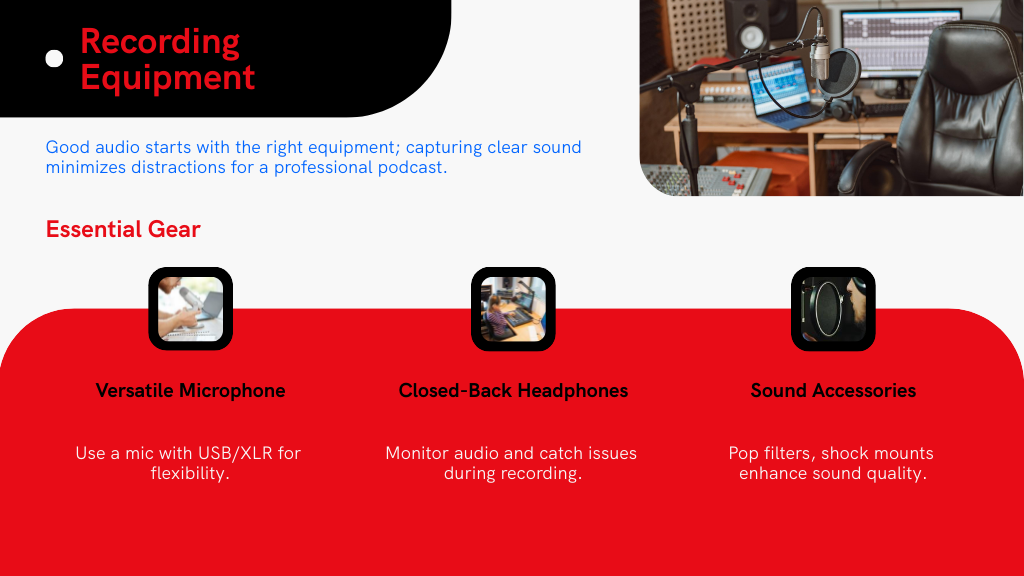
Pick the Best Recording and Editing Software
While selecting your podcast’s recording and editing software, you’ll want to balance ease of use, features, and budget to find the best fit.
If you’re wondering how to create a podcast with high-quality remote recordings, Riverside.fm offers multi-track capabilities ideal for interviews. For Mac users, GarageBand is a free, user-friendly option.
Audacity stands out as a versatile, open-source choice that works across platforms and delivers professional editing features at no cost. Descript combines recording, editing, and transcription, streamlining your workflow with AI tools.
While Zoom is handy for remote interviews, it lacks advanced editing and top audio quality. Choose software that fits your podcast format and budget to guarantee smooth production and great sound quality.
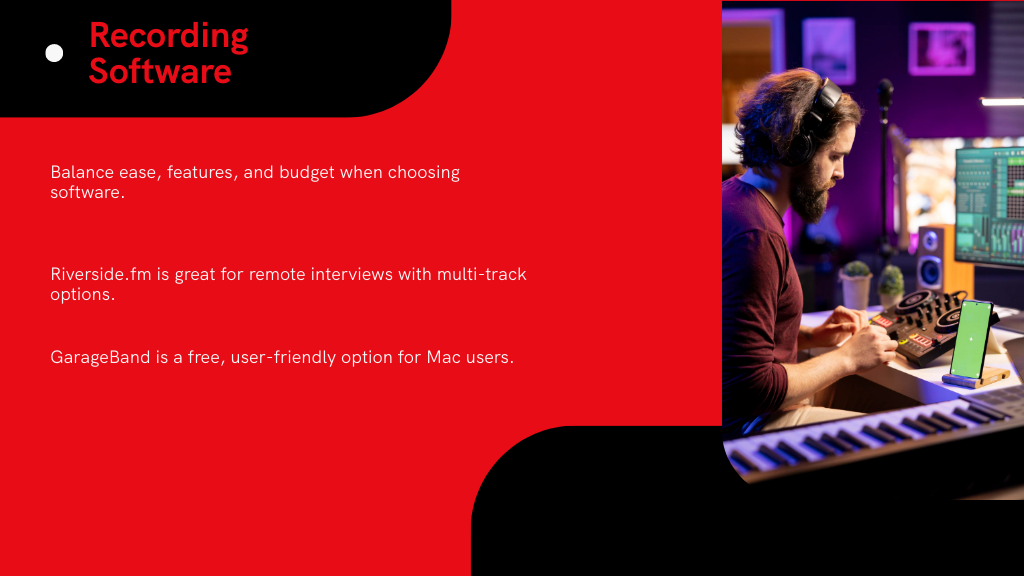
Prepare and Outline Your First Episodes
After picking the right software to record and edit your podcast, it’s time to focus on shaping your content. Preparing and outlining your first episodes is an essential step in how to start a podcast.
Here’s how to get started:
- Create a structured outline with key points, segments, and any guest contributions to keep your episode flowing smoothly.
- Plan an engaging opening that grabs attention and sets the episode’s tone—first impressions matter.
- Schedule time for closing remarks and calls to action, encouraging your listeners to interact and stay connected.
Make sure your topics progress logically to avoid confusion, and aim for an episode length between 20 and 60 minutes to keep your audience engaged without dragging it out.
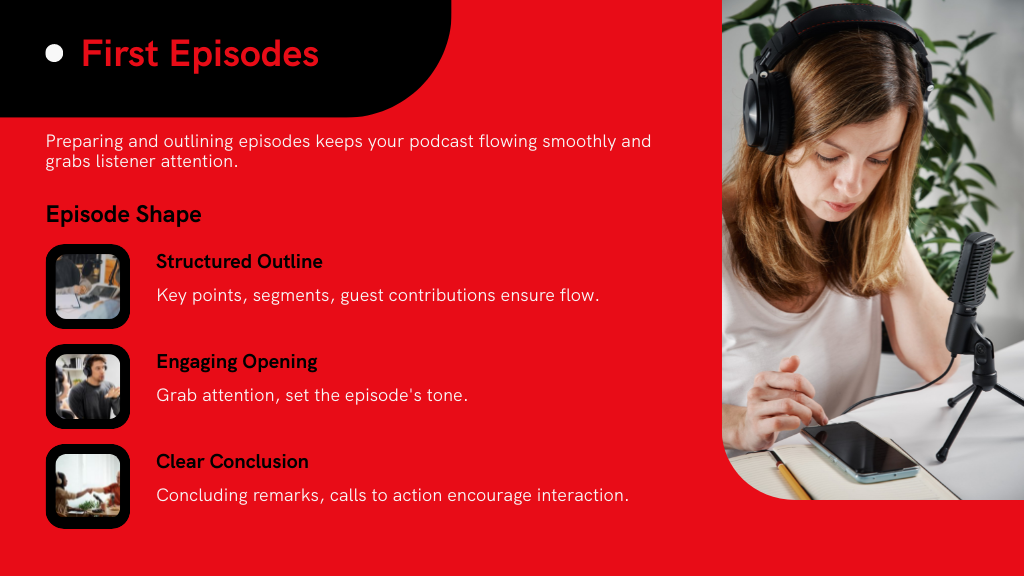
Record Your Initial Podcast Episodes
Although preparing your content is essential, recording your initial podcast episodes requires a quiet space and proper setup to capture clear audio.
When learning how to create a podcast, choose a location with minimal background noise to guarantee high-quality sound. Conduct test recordings to find the best microphone placement, ideally 2-4 inches from your mouth.
Using user-friendly software like GarageBand or Audacity can simplify the recording process and offer basic editing tools. Record multiple takes of your episode to provide options for the final version.
Keep a structured outline handy to maintain a logical flow and cover your key points efficiently. These steps will help you produce clear and engaging episodes right from the start.
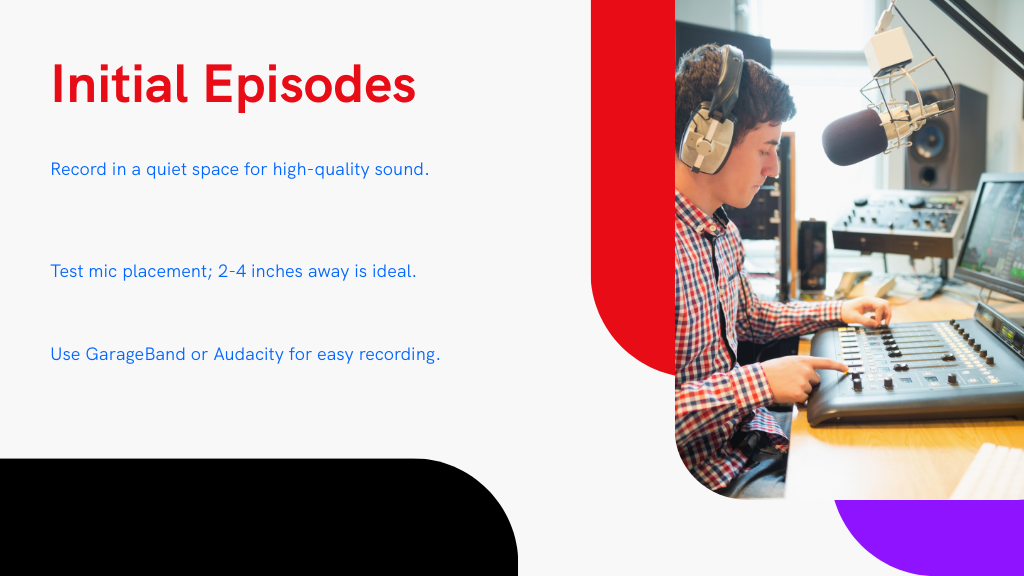
Edit Your Podcast Audio for Quality and Flow
Now that you’ve recorded your episodes, it’s time to clean up your audio and enhance the structure. Use editing tools to remove background noise, balance levels, and smooth shifts between segments. These steps will make your podcast sound polished and keep your listeners engaged from start to finish.
Clean Audio Techniques
When you want your podcast to sound professional, clean audio is essential, and that starts with proper mic placement—keeping it 2 to 4 inches from your mouth helps cut background noise and capture clear sound. Knowing how to produce a podcast means mastering these clean audio techniques to keep your episodes crisp and engaging.
- Test mic positions and record samples to find the best setup, minimizing background noise.
- Use editing software to cut unwanted parts smoothly, adding fades to avoid pops or clicks.
- Equalize audio levels so your volume stays consistent, keeping listeners comfortable throughout.
Export your final edit as a .WAV file to preserve quality for hosting platforms. This attention to detail makes your podcast stand out.
Enhance Episode Structure
As you edit your podcast audio, focusing on quality and flow will make your episodes more engaging and enjoyable to listen to. To enhance episode structure, use editing software to remove mistakes and improve clarity, ensuring a smooth listening experience. Add sound effects or music strategically to boost entertainment without overwhelming your content.
Pay close attention to audio levels, balancing clarity with engaging shifts between segments. Aim for consistent pacing to keep listeners hooked throughout your episode.
Before finalizing, review your audio thoroughly to catch any lingering issues and polish the overall quality. Mastering these steps is essential when learning how to create a podcast that stands out and retains an audience effectively. Your well-edited episode will reflect professionalism and keep listeners coming back for more.
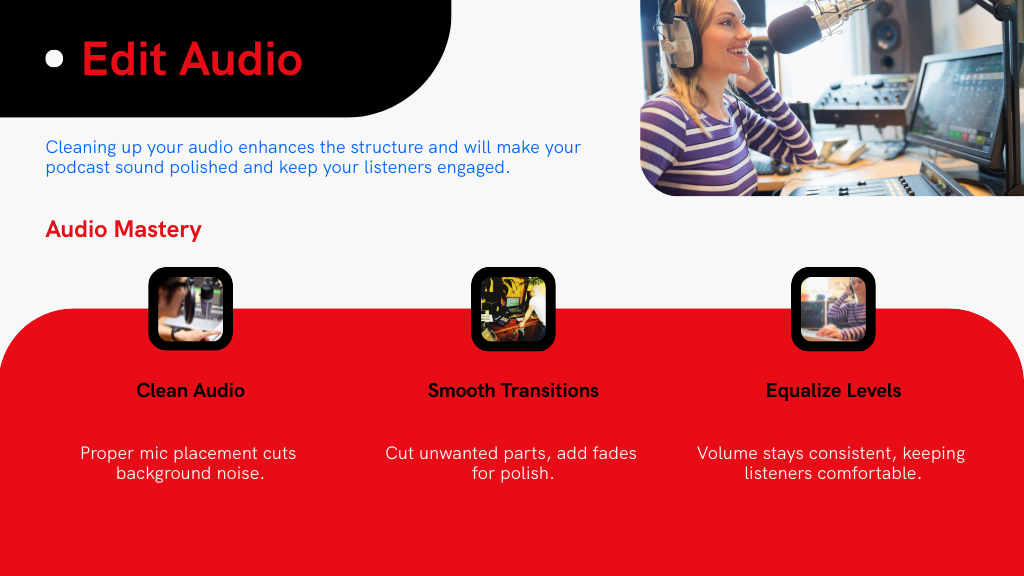
Design Eye-Catching Podcast Artwork
Podcast artwork is your show's first impression and plays a key role in attracting new listeners. When figuring out how to create a podcast, don’t overlook this visual element—it can make or break your potential audience’s interest.
Here are three essential tips to design eye-catchingpodcast artwork:
- Use a 3000 x 3000 pixel square image at 72 dpi for clarity on all platforms.
- Limit text to four words with up to two complementary fonts, and visually reflect your podcast’s theme.
- Maintain consistent branding across all artwork versions to build recognition and loyalty.
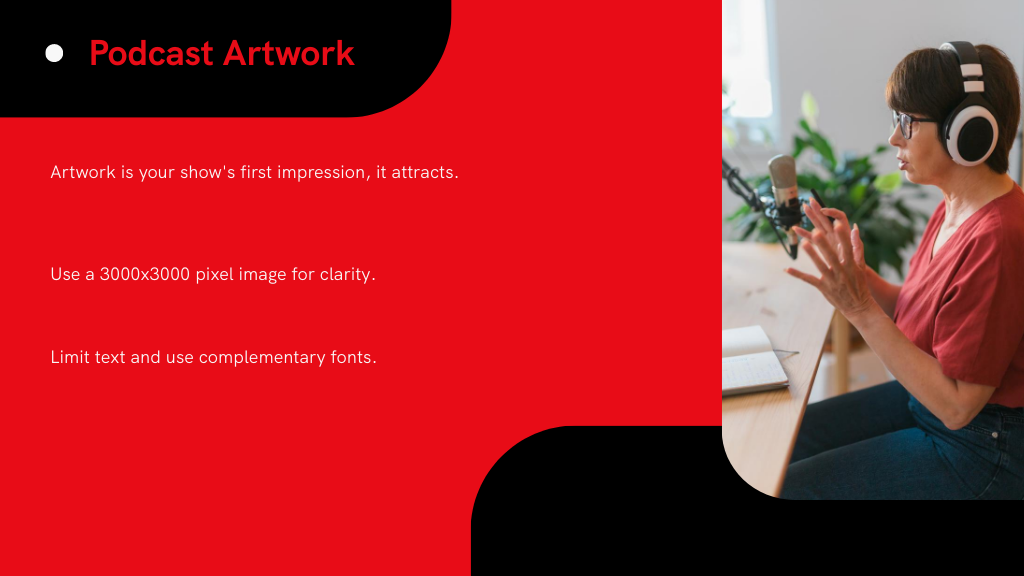
Tools like Canva or Adobe Creative Cloud Express can help you create professional designs, or you might hire a designer on Fiverr for a unique, polished look.
Set Up Podcast Hosting and Distribution
Choosing the right podcast hosting service is essential for getting your show online and heard. To begin, pick a reliable platform like Buzzsprout or Libsyn that offers enough storage, easy episode management, and distribution to major directories.
Selecting a dependable podcast host like Buzzsprout or Libsyn ensures smooth episode management and wide distribution.
If you’re wondering how to start a podcast for free, some hosts offer free plans with basic features, perfect for beginners. Next, fill in your podcast’s unique title, engaging description, and eye-catching artwork to boost visibility.
Your host will create an RSS feed, which you’ll submit to platforms such as Apple Podcasts and Spotify for automatic episode updates. Upload your first episode and add show notes with relevant keywords to improve discoverability. This setup guarantees your podcast reaches listeners efficiently across multiple platforms.
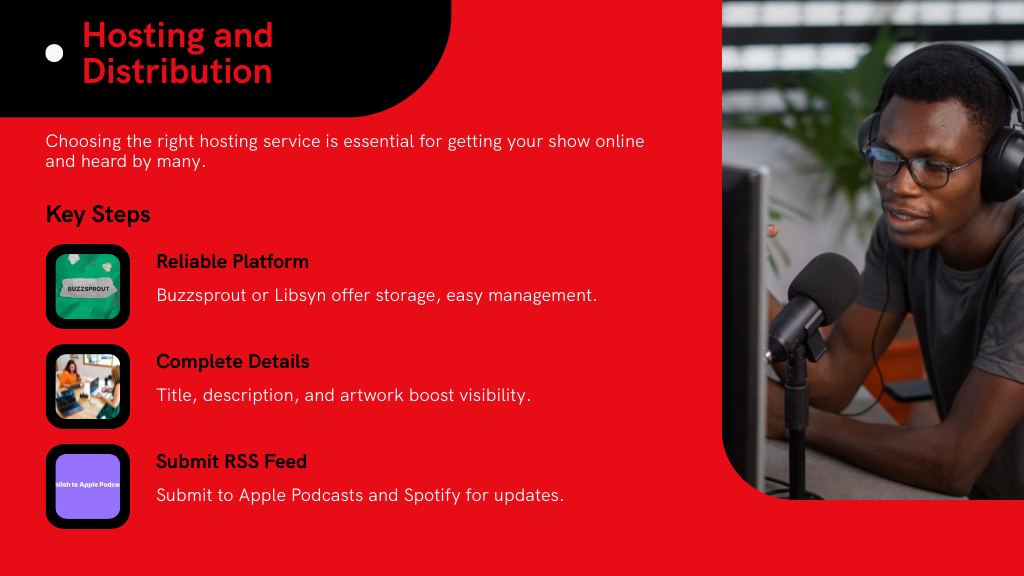
To get your podcast noticed, start by submitting it to popular directories where listeners often search for new shows. You’ll want to stay active on social media, sharing engaging content and connecting with your audience regularly. Plus, teaming up with other podcasters can help you reach new listeners and grow your community faster.
Directory Submission Strategies
Although getting your episodes ready is important, submitting your show to major directories like Apple Podcasts, Spotify, and Google Podcasts is what really gets your content in front of listeners.
When learning how to start a podcast, you’ll want to:
- Confirm your RSS feed is properly formatted with accurate titles, descriptions, and metadata to avoid submission issues.
- Regularly update your podcast info and artwork across directories—62% of new listeners notice quality artwork first.
- Use tools like Podchaser or Listen Notes to track your listings and discover new directories to expand your reach.
Don’t forget to encourage your audience to leave ratings and reviews; positive feedback boosts your podcast’s visibility and credibility, especially on Apple Podcasts, which drives about 32.5% of all downloads.
When you promote your podcast on social media, you tap into a powerful way to build your audience and keep them engaged. Platforms like Instagram, Twitter, and Facebook let you share episode highlights and behind-the-scenes content, helping listeners connect with your show.
Since 75% of podcast fans discover new episodes this way, it’s essential for anyone wondering how to create a podcast for free. Create a content calendar to post regularly—teasers, graphics, and interactive posts can boost engagement by up to 50%.
Encourage sharing through contests or giveaways to increase your reach organically by 28%. Additionally, targeted ads on Facebook and Instagram can attract specific listeners, boosting visibility. This consistent, strategic social media presence is key to growing your podcast audience effectively.
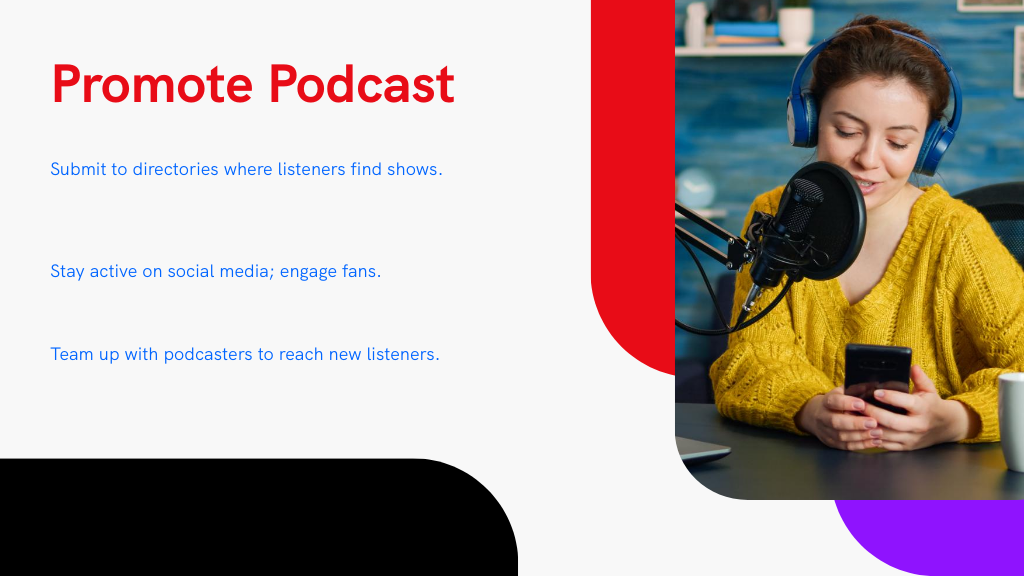
Collaborations and Networking
Building your podcast audience becomes much easier once you start collaborating with others in the industry. If you’re wondering how can I start a podcast and grow it effectively, networking is key.
Here are three essential ways to promote your podcast and build your audience:
- Partner with other podcasters for promo swaps to tap into their listener base and gain new followers.
- Connect with industry influencers or guests for cross-promotion, boosting your podcast’s credibility and reach.
- Join podcasting communities and attend conferences to gain insights, foster relationships, and discover collaboration opportunities.
Conclusion
Starting your podcast is like planting a seed—you’ve laid the groundwork, now it’s time to watch it grow. With each step, you’re weaving your voice into the vast audio tapestry, ready to captivate listeners far and wide. Remember, every great show began with a single episode, so don’t wait for perfection. Immerse yourself, nurture your passion, and let your podcast bloom into something unforgettable. Your audience is just a story away.
